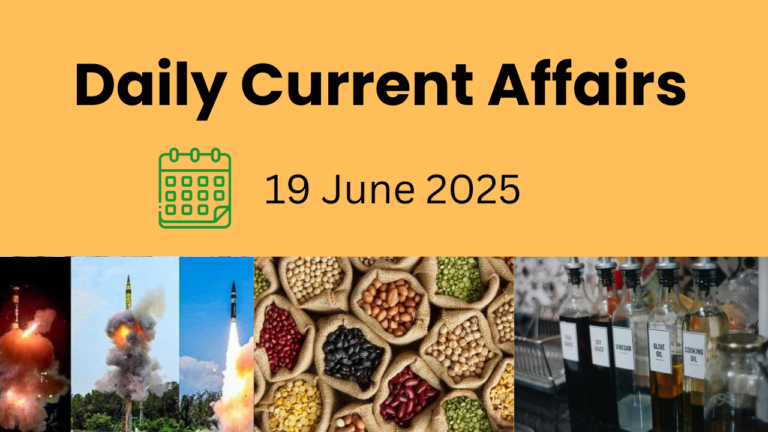1. Women’s Political Participation in India: Progress, Challenges, and Future Pathways
Context: Women’s political participation in India has undergone a significant transformation over the past decade. While many nations saw a narrowing gender gap in political engagement during the 1990s, India witnessed this shift only in the 2010s. The increasing involvement of women in the electoral process is an encouraging sign, yet challenges remain in ensuring equal representation in governance and decision-making roles.
Key Insights from Research:
Voting Behavior & Agency:
- Women’s voting patterns are often overlooked by political parties, which tend to treat them as a homogeneous group, ignoring differences in caste, class, and religion.
- Female voters are frequently seen as passive beneficiaries of welfare schemes like Ujjwala Yojana and Pradhan Mantri Awas Yojana, rather than as active political agents.
- Despite rising voter turnout, women’s engagement in rallies, campaigns, and advocacy remains significantly lower due to social and structural barriers.
Rising Voter Turnout & Political Power:
- In the 2019 General Elections, women’s voter turnout (67.2%) slightly exceeded that of men (67%).
- In the 2024 Lok Sabha Elections, women again had a higher voting percentage (65.8%) compared to men (65.6%).
- In states with high male migration, particularly economically backward regions, women’s voter turnout has increased significantly, filling the political vacuum left by migrating men.
- In states with strong regional political movements like Tamil Nadu and Kerala, women’s preferences are often shaped by local political dynamics rather than national gender-based trends.
Women’s Political Participation Beyond Voting:
Although more women are voting, their presence in leadership roles remains limited. Women constitute only 14.4% of the Indian Parliament as of 2024, significantly lower than the global average of 26.5%.
At the grassroots level, the introduction of 33% reservation for women in Panchayati Raj Institutions (PRIs) has led to better governance and development outcomes. However, challenges like proxy leadership (where male relatives influence elected women) continue to persist.
Factors Influencing Women’s Political Participation:
- Socio-Cultural Norms – Traditional gender roles and social conditioning restrict women’s active political engagement.
- Education & Literacy – Higher education levels enhance political awareness and decision-making abilities.
- Economic Independence – Financial security enables women to engage in political discourse and leadership roles.
- Caste, Class & Religion – Women’s voting behavior is deeply influenced by social identities, often aligning with community-based political affiliations.
- Political Party Strategies – Parties that actively engage with women through gender-sensitive policies and welfare schemes witness higher female support.
- Social Movements – Women’s participation in activism and advocacy often translates into greater involvement in formal politics.
- Regional & State-Specific Factors – Local governance structures and regional political dynamics shape women’s participation in politics.
Global Perspective & Policy Goals:
- The Sustainable Development Goals (SDGs), particularly SDG 5 (Gender Equality & Women Empowerment), emphasize equal political participation.
- The Beijing Declaration and Platform for Action advocates for balanced representation of women in decision-making positions.
- Many countries, including Rwanda (61% women in Parliament) and Sweden (46%), have successfully closed the gender gap in politics, offering models for India to follow.
Way Forward: Towards Gender-Equal Politics:
The decentralization of governance over the past two decades has made it essential to measure women’s participation in decision-making roles. Gender-sensitive policies such as Gender Budgeting, which ensures financial allocation for women’s welfare, have been implemented for inclusive growth.
To achieve true gender parity in politics, India must:
- Strengthen political reservations for women beyond local governance.
- Enhance political literacy programs to empower women as informed voters and leaders.
- Address socio-cultural barriers that restrict women’s active participation in governance.
- Ensure better data collection and analysis to assess and improve women’s involvement in politics.
A future where women participate not just as voters but as decision-makers is key to achieving a truly inclusive and democratic India.
2. Cabinet Approves Revised Rashtriya Gokul Mission: Boosting India’s Livestock Sector
Context: The Union Cabinet has approved the Revised Rashtriya Gokul Mission (RGM) to accelerate growth in the livestock sector, focusing on the development, conservation, and genetic upgradation of indigenous cattle breeds. This mission aims to enhance milk production and productivity, thereby benefiting farmers and the dairy industry.
Overview of Rashtriya Gokul Mission (RGM):
Objective:
Launched in 2014, the Rashtriya Gokul Mission aims at:
- Preserving and improving indigenous cattle breeds
- Enhancing genetic quality of bovine populations
- Boosting milk production and productivity
Implementation:
The mission is implemented by the Department of Animal Husbandry and Dairying under the Government of India.
Key Initiatives Under RGM:
- Strengthening Semen Stations to improve artificial insemination coverage.
- Developing Artificial Insemination Networks to enhance breeding efficiency.
- Upgrading Central Cattle Breeding Farms for quality livestock production.
- Promoting Farmer Training & Awareness Programs to ensure widespread adoption of scientific cattle rearing methods.
- Establishing Gokul Grams, 16 Integrated Indigenous Cattle Development Centers, for the scientific conservation and development of native cattle breeds.
Key Features of the Revised RGM:
Financial Outlay:
3,400 crore allocated for the 15th Finance Commission cycle (2021-22 to 2025-26).
New Additions to the Mission:
- Heifer Rearing Centres (HRCs): One-time assistance covering 35% of the capital cost will be provided to implementing agencies for establishing 30 housing facilities with a total capacity of 15,000 heifers.
- Interest Subvention for Farmers: To encourage farmers to purchase high-genetic merit (HGM) in vitro fertilization (IVF) heifers, a 3% interest subvention will be provided on loans availed from milk unions, financial institutions, or banks.
Impact of Revised RGM:
- Enhanced Milk Production: Strengthening cattle genetics will boost milk yield, benefiting the dairy sector.
- Economic Growth for Farmers: Increased financial support and subsidies will improve farmers’ earnings.
- Sustainable Livestock Development: Scientific breeding techniques will aid in preserving indigenous breeds while enhancing their productivity.
Conclusion: The Revised Rashtriya Gokul Mission represents a significant step towards modernizing India’s dairy and livestock sector. By promoting scientific breeding, financial support for farmers, and indigenous cattle conservation, the initiative will play a crucial role in ensuring a sustainable and prosperous dairy industry in India.
3. Cabinet Approves 1,500 Crore Incentive for BHIM-UPI Low-Value Transactions
Context: The Union Cabinet, chaired by Prime Minister Narendra Modi, has approved the “Incentive Scheme for Promotion of Low-Value BHIM-UPI Transactions (Person to Merchant – P2M)” for the financial year 2024-25. This initiative aims to accelerate the adoption of digital payments, particularly for transactions below 2,000, benefiting small merchants and consumers alike.
What is BHIM?
The Bharat Interface for Money (BHIM) is a digital payment application based on the Unified Payments Interface (UPI) that facilitates fast, secure, and seamless transactions via mobile apps and the USSD (99#) service.
Key Highlights of BHIM:
- Launch: Introduced by the Government of India on December 30, 2016.
- Mass Adoption: Achieved 1 crore downloads within 10 days of launch and recorded over 2 million transactions.
- Developed by NPCI: Created under the guidance of the Reserve Bank of India (RBI) and National Payments Corporation of India (NPCI).
- Interoperability: Works across all UPI-enabled banks and apps.
- Merchant Benefits:
Direct bank-to-bank transactions.
- Virtual Payment Address (VPA) and QR code for easy transactions.
1,500 Crore UPI Incentive Scheme: Key Details
Objective of the Scheme:
The government seeks to:
- Promote the indigenous BHIM-UPI platform.
- Increase UPI transaction volume to 200 billion in FY25.
- Encourage digital transactions among small merchants.
- Expand UPI reach to rural areas using UPI 123PAY (feature phone payments) and UPI Lite/UPI LiteX (offline payments).
- Strengthen the digital payments infrastructure and reduce technical failures.
Incentive Structure:
For transactions up to 2,000:
- Small merchants: 0.15% incentive.
- Large merchants: No incentive.
For transactions above 2,000:
- No incentives for any merchant.
Why Was This Scheme Introduced?
- The Government of India promotes digital payments as part of its financial inclusion strategy.
- Merchant Discount Rate (MDR), which is usually charged by banks for processing payments, was waived off for RuPay Debit Cards and BHIM-UPI transactions in January 2020.
- The incentive scheme ensures that banks and payment providers can sustain UPI transaction processing costs despite the zero MDR policy.
Expected Benefits of the Scheme:
- Ensures zero additional charges for consumers and small merchants.
- Encourages wider adoption of UPI, especially among small merchants.
- Supports the government’s “Less-Cash Economy” initiative.
- Improves 24/7 UPI service availability by motivating banks to maintain uptime and minimize technical failures.
- Reduces dependency on cash transactions, promoting financial inclusion.
Industry Concerns Over Funding Allocation:
- Despite the 1,500 crore outlay, experts believe the amount is insufficient to sustain UPI transaction costs.
- Industry estimates suggest a requirement of 4,000 – 5,000 crore to support the digital payments ecosystem.
Proposed Solutions:
- Introducing a controlled MDR of 0.25% for merchants with annual turnover exceeding ₹40 lakh, while maintaining zero MDR for small merchants.
Conclusion:
The BHIM-UPI Incentive Scheme is a significant step in advancing India’s digital payments ecosystem. While it provides much-needed support to small merchants, addressing industry concerns about sustainable funding will be key to ensuring long-term digital payment growth.
4. Sonic Weapons: The Power of Sound in Warfare and Control
Context: Serbia’s government has come under scrutiny for allegedly deploying a banned sonic weapon to disperse protesters in Belgrade. The use of such technology has raised concerns over its ethical and legal implications.
What Are Sonic Weapons?
Also known as Acoustic Weapons, these devices utilize high-intensity sound waves to disrupt, disorient, or incapacitate individuals. They can emit both audible and inaudible frequencies, impacting people over long distances.
Originally designed for military and crowd control applications, these weapons were notably used by the U.S. military in Iraq (2004). Some versions also serve as long-range voice amplifiers, enabling authorities to issue commands effectively.
How Do Sonic Weapons Work?
- Equipped with hundreds of transducers, converting energy into powerful sound waves.
- Emit highly concentrated, amplified sound aimed at specific targets.
- Authorities can adjust the frequency, volume, and duration to control the impact.
- The narrow sound beam can trigger extreme discomfort, pain, and disorientation.
Types of Sonic Weapons:
- Long-Range Acoustic Device (LRAD):
- Used by law enforcement and military for crowd control.
- Projects sound over 8,900 meters at intensities reaching 160 decibels (dB).
- Can cause ear pain, hearing damage, nausea, and dizziness.
- Mosquito Device:
- Emits high-pitched sounds that are only perceptible to young individuals (under 30 years old).
- Commonly used to deter loitering in public spaces.
- Causes irritation and discomfort, making areas unappealing to youth.
- Infrasonic Weapon:
- Emits low-frequency sound waves that are inaudible but affect the body.
- Can cause headaches, nausea, vertigo, and even internal organ damage.
- Still in the research phase, but holds potential for military applications.
The Ethical Debate:
The increasing use of sonic weapons in crowd control and warfare raises serious concerns about their long-term effects and potential misuse. While some advocate for their non-lethal nature, others argue they can inflict severe, lasting harm.
As technology evolves, the debate over sonic warfare and its legal limitations is far from over.
5. Right to Development: A Fundamental Priority
Context: The Supreme Court of India has reinforced the importance of balancing the right to development with the right to a clean environment. In a recent verdict, the Court set aside judicial orders that had halted development activities in Auroville, emphasizing the principles of sustainable development enshrined in Articles 14, 19, and 21 of the Constitution.
Key Observations by the Supreme Court:
- While the precautionary principle and polluter pays principle are crucial in environmental law, the right to industrialization and development is equally fundamental.
- The right to a clean environment is protected under Articles 14 and 21, but the right to development holds equal priority under Articles 14, 19, and 21.
NGT’s Order on Auroville Township (April 2022):
- The National Green Tribunal (NGT), Chennai, had ordered the Auroville Foundation to halt construction until environmental clearance was obtained.
- The Supreme Court ruled that the NGT committed a gross error by overstepping its jurisdiction.
- The case was based on concerns about road construction affecting the Darkali forest, but the Court clarified that this was a man-made plantation, not an officially recognized forest under the Forest (Conservation) Act, 1980.
Supreme Court’s Rationale for Overturning NGT’s Decision:
The Master Plan for Auroville was:
- Approved by the Auroville Foundation’s governing board (1999).
- Sanctioned by the Ministry of Urban Development (2001).
- Published in the Gazette of India (2010).
- The NGT misapplied the precautionary principle and exceeded its jurisdiction by interfering in a legally approved project.
Madras High Court’s Order on Auroville Town Development Council (March 2024):
- The High Court had nullified a June 2022 notification regarding the reconstitution of the Auroville Town Development Council.
- The Supreme Court overturned this decision, criticizing certain residents for misusing litigation to stall progress.
- Respondent Natasha Storey was ordered to deposit Rs. 50,000 to the Supreme Court Legal Service Committee within two weeks.
Conclusion: Upholding Sustainable Development:
This judgment reaffirms that industrialization and development hold constitutional validity alongside environmental protection. The Supreme Court cautioned against unnecessary judicial interference in legally approved projects, ensuring that sustainable development remains a priority while respecting statutory approvals.
6. Discovery of a New Killifish Species in Kenya
Context: Scientists have identified a new species of killifish, Nothobranchius sylvaticus, in Kenya’s Gongoni Forest, a habitat estimated to be 7.09 million years old. This groundbreaking discovery makes it the first-ever endemic forest-dwelling killifish.
The species is exclusive to Kenya and has been categorized as Critically Endangered (IUCN) due to habitat destruction and climate change.
What Are Killifish?
General Overview:
- Killifish are small, egg-laying (oviparous) fish belonging to the Cyprinodontiformes order, commonly known as toothcarps.
- These fish exhibit vibrant colors, making them popular among aquarium enthusiasts.
Natural Habitat:
- Killifish are found in freshwater and brackish water environments across the Americas, Europe, Africa, the Middle East, and Asia.
- Some species thrive in ephemeral (seasonal) water bodies like swamps, floodplains, and temporary pools, laying eggs that can survive in dry conditions for months until rains revive them.
Survival & Adaptability:
- Can withstand extreme environments, including high salinity, low oxygen levels, and fluctuating temperatures.
- Used as model organisms in scientific research on aging, genetics, and evolutionary adaptation due to their short lifespan and rapid reproductive cycle.
Kenya: A Biodiversity Hotspot
Geographical Significance:
- Located in East Africa, Kenya shares borders with South Sudan, Ethiopia, Somalia, Uganda, Tanzania, and the Indian Ocean.
- Home to diverse ecosystems, from savannas and mountains to lakes and coastal regions.
Important Ecological & Conservation Highlights:
Major Lakes:
- Lake Turkana – The world’s largest desert lake.
- Lake Victoria – Africa’s largest freshwater lake, shared with Tanzania and Uganda.
Dadaab Refugee Complex:
- One of the largest refugee camps globally, housing people displaced by Somalia’s civil war.
India-Kenya Wildlife Partnership:
- India is acquiring 20 cheetahs from Kenya to help revive the species in the Gandhi Sagar Wildlife Sanctuary (Madhya Pradesh-Rajasthan).
- Cheetahs once roamed India’s grasslands but were declared extinct in 1952—this initiative is part of efforts to reintroduce them into their natural habitat.
Conservation Challenges & The Future:
The discovery of Nothobranchius sylvaticus underlines the rich biodiversity of Kenya but also highlights the urgent need for conservation. Factors such as deforestation, habitat fragmentation, and climate change pose severe threats to fragile species like this forest-dwelling killifish.
Protecting natural habitats, promoting sustainable development, and enhancing conservation efforts will be key to ensuring the survival of rare and endangered species.




